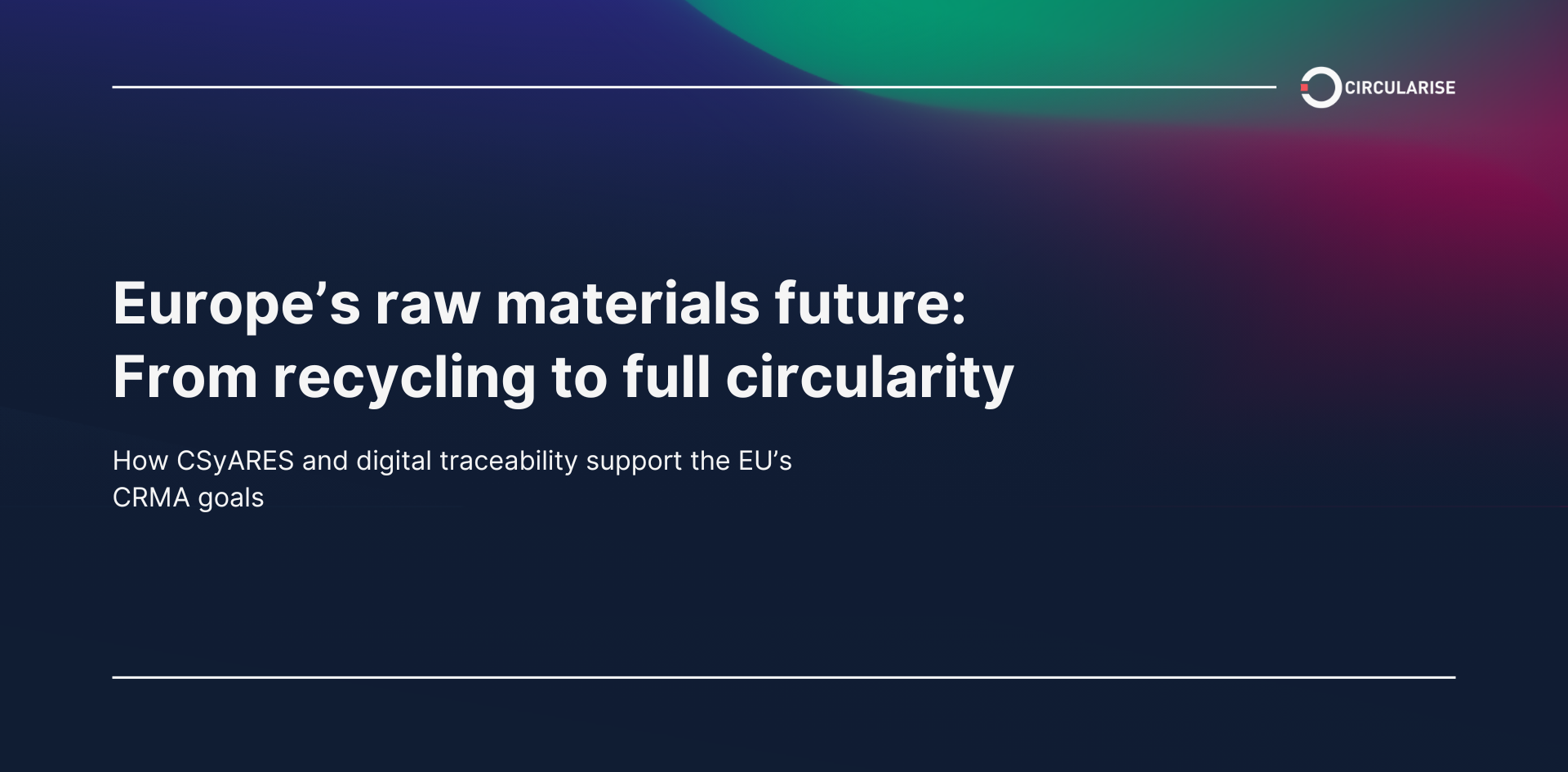Update: The Renewable Energy Directive III (RED III) has now replaced RED II, setting enhanced and binding targets for renewables while introducing streamlined rules and additional sustainability criteria across the EU energy landscape.
What is the RED II biofuels regulation?
The Renewable Energy Directive (RED II) was a regulation for all European Union countries that promotes the use of energy from renewable sources. It covered various raw materials and fuels including agricultural and forest biomass, waste and residues, and other non-food biomass materials for the production of biofuels, bioliquids, and biomass fuels.
RED II promoted sustainable production through the use of recycled carbon fuels to achieve further energy diversification and decarbonisation of the transport sector. These are liquid and gaseous fuels produced from liquid or solid waste streams of non-renewable origin or from waste processing gas and exhaust gas of non-renewable origin.
The regulation focused on ensuring that the fuels are produced sustainably and that greenhouse gas emissions savings are sufficient according to RED II. Requirements for greenhouse gas emission tracking apply to all supply chain actors from the production of raw materials to the distribution of the final biofuel product, to provide a complete picture of the impact of biofuel production.
Why comply with RED II?
By getting certified for RED II compliance, businesses which produce materials that could be used for biofuel production get access to the lucrative biofuels market. Without proof of compliance with RED II, businesses cannot sell materials for biofuel production, missing out on maximising the value of biomass materials and biobased fuels.
What are the requirements of RED II?
To ensure that biofuels are truly a sustainable alternative to fossil fuel-based fuels, RED II imposes several specific requirements for the sourcing and overall environmental impact of biofuels sold in the EU. RED II requires that:
- Transport biofuels have a GHG saving of 65%, and
- Biofuels for electricity, heating, and cooling must have a GHG saving of 80%
In order to prevent inappropriate land usage and risk to food security, there are also limitations on biomass production from high indirect land use change (ILUC) risk areas and using feedstock that could otherwise be used for food.
To prove that these requirements are met, a company must be certified by an independent third party. This process involves auditing operations across the biofuel supply chain to ensure the sustainability and sourcing requirements are met. Additionally, companies are required to submit regular reports to demonstrate ongoing compliance with the certification scheme and RED II requirements.
There are also additional requirements on a per-country basis within the EU. To learn more about the specific requirements in your country, take a look at this report summarising the EU biofuels market and regulations.
How to get certified for RED II compliance
1. Understand how the directive affects your type of business
The materials used and the role you play within the biofuels supply chain affect the audit procedures applicable to your business. You should first understand the raw material category that your company falls into:
- Raw materials and fuels such as agricultural and forest biomass
- Waste and residues
- Dry biomass and non-food biomass materials
Or the biofuel category your company is part of:
- Biofuels, bioliquids, and biomass fuels
- Advanced biofuels and biogas for transport
- Biofuels, bioliquids, and biomass fuels with a low risk or a high risk of indirect land-use change (ILUC)
- Liquid and solid waste streams of non-renewable origin or waste processing and exhaust gas of non-renewable origin for the production of recycled carbon fuels
You will then have an idea of the areas of the legislation that are relevant to your company, including the Waste Directive, Commission Delegated Regulation, and other related acts and regulations.
2. Select a certification scheme and certified body
Once you understand how RED II affects your business, you need to select a certification scheme for your company. There are multiple options which certify compliance with RED II. Some of the most popular options include ISCC, REDcert, and RSB. You must first pick the scheme which is best for your company, based on your operations and the preference of your supply chain.
You can then select an independent third party (certified body) which can conduct the audit and certify your compliance with the standards laid out by your chosen certification scheme.
Choosing the right certified body is dependent on your location and their availability to conduct the audit. Many certified bodies have a large backlog of audit requests, so it is best to start this process early.
3. Prepare for the audit
It is your company’s responsibility to ensure that the fuels are produced sustainably, and that greenhouse gas emissions savings are sufficient according to RED II. The requirements for GHG emissions apply to all relevant supply chain elements, from the production of raw materials to the distribution of the final product.
The company can report greenhouse gas (GHG) emissions using either pre-set 'default' values or 'actual' values. These default values, specific to raw material and process, are outlined in the RED II for various biofuels and bioliquids. However, if the actual GHG emissions of the biomass are lower than these default values, the company could benefit more by calculating and reporting the actual values. If lower GHG emissions can be proven, then the material should be worth more than if the higher default values are used.
Setting up a documentation system is a crucial part of preparing for an audit. This system must capture key information including sourcing details and carbon footprint data. This information will be shared with customers in the form of sustainability declarations (a.k.a. proofs of sustainability), and an internal record of accurately mass balanced input and output materials must be maintained. All data relevant to material movements and environmental impact must be collected and periodically submitted to the certified body in order to maintain compliance.
During the audit, you need to produce clear documentation of all of these relevant processes which are in place at your business, including information on how the processes will be monitored and how the required documentation will be maintained. A risk management plan must also be in place to monitor and maintain compliance.
A systematic approach to evaluating the requirements helps to ensure that all employees involved in the process understand their roles and are appropriately trained. Without this, record-keeping errors can occur, leading to inaccuracies in the sustainability proof. This could result in the suspension of a company's certification if not rectified. It is vital to maintain open communication with the certified body and seek assistance promptly, as early addressed mistakes can likely be corrected without repercussions.
4. Get certified
Once you have all the necessary systems in place and the audit has been successfully completed, the certificate is issued by the certified body. Depending on the certification scheme you select, this may then need final approval from the regulatory body before you are licensed to trade biofuel materials.
You will need to periodically report on your mass balanced material movements and processes to your certified body in order to maintain your certification.
How to avoid the common causes of non-compliance with RED II
Here are the top 3 causes of non-conformities from ISCC certification audits - one of the leading certification bodies for RED II compliance - and how to avoid making these same mistakes.

#1 Implementing an inappropriate documentation management system
An inappropriate or unreliable documentation management system is one of the main causes of failing an ISCC audit. Until recently, there were no solutions to assist with this process. Companies that don’t build a custom software solution rely on spreadsheets and folders of supporting documents to maintain the required reports on biofuel production processes.
Unfortunately, as these systems are not specifically built for managing the requirements of RED II and mass balancing, they are labour-intensive and prone to human error. This is why MassBalancer was created, to create a scalable digital system that aids with documentation handling and improves traceability.
#2 Calculating and communicating GHG incorrectly
Due to the range of feedstocks and processes involved in the biofuels value chain, there is no one simple formula for GHG emission calculations. This can lead to much confusion and errors in reporting. Non-conformities in ISCC audits are often a result of not correctly calculating GHG emissions, or not properly communicating the breakdown of GHG emissions in the documents sent to customers and included in the quarterly audits.
Increasingly, companies are moving towards calculating actual greenhouse gas (GHG) emissions instead of using estimated figures, as the benefits of lower emission-intensity fuels become more evident to business owners. However, this approach requires a thorough understanding of how to correctly calculate and convey GHG figures, tailored to the specific operations of each business.
Setting up an accurate system requires a solid understanding of GHG calculations. This can be achieved through attending biofuel-specific training sessions, seeking the help of a consultant, or using a software tool designed to assist with these calculations.
#3 Not ensuring material traceability
Another major cause of non-compliance with ISCC standards is not ensuring material traceability by correctly following the chain of custody principles selected with either physical segregation or mass balancing. Again, this underscores the need for an accurate and reliable documentation system for all material movements. It ensures an auditable paper trail, tracking products from their arrival at the business, through various operations, and finally, to their shipment to the customer.
Circularise’s free AI assistant to guide you through ISCC documentation
Understanding the various requirements that are applicable to your organisation is tedious, due to the extent of all of the different documents and procedures for certification. To make this easier, Circularise has trained an AI assistant using all of the ISCC documents to provide advice on the ISCC certification system.

Circularise is the leading software platform that provides end-to-end traceability for complex industrial supply chains. We offer two traceability solutions: MassBalancer to automate mass balance bookkeeping and Digital Product Passports for end-to-end batch traceability.
Use our custom-trained AI assistant to guide you through the ISCC system documents






